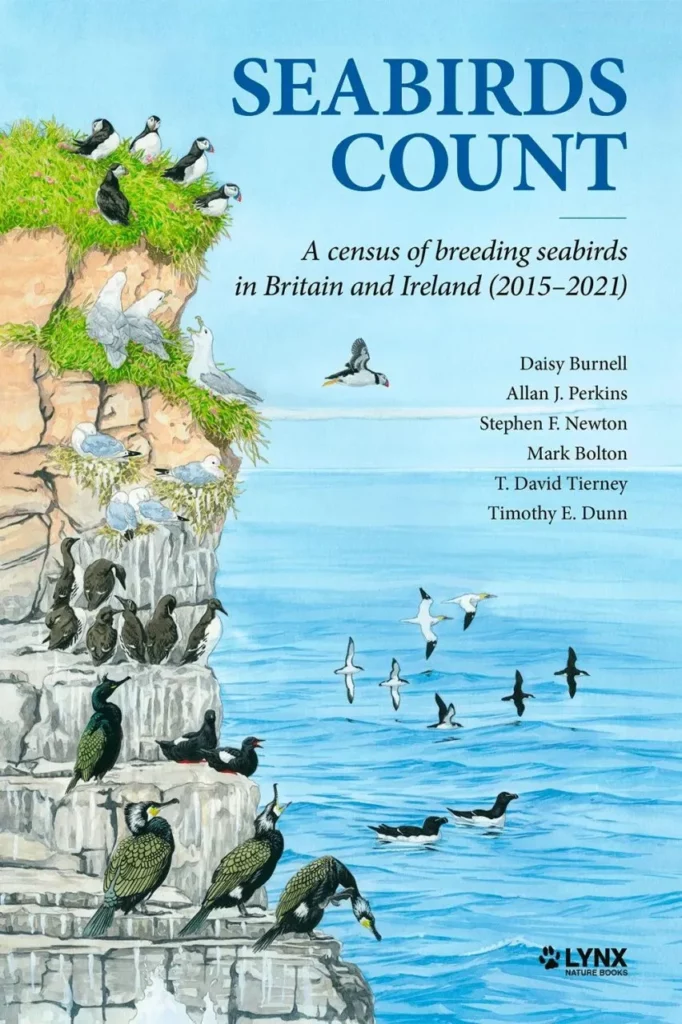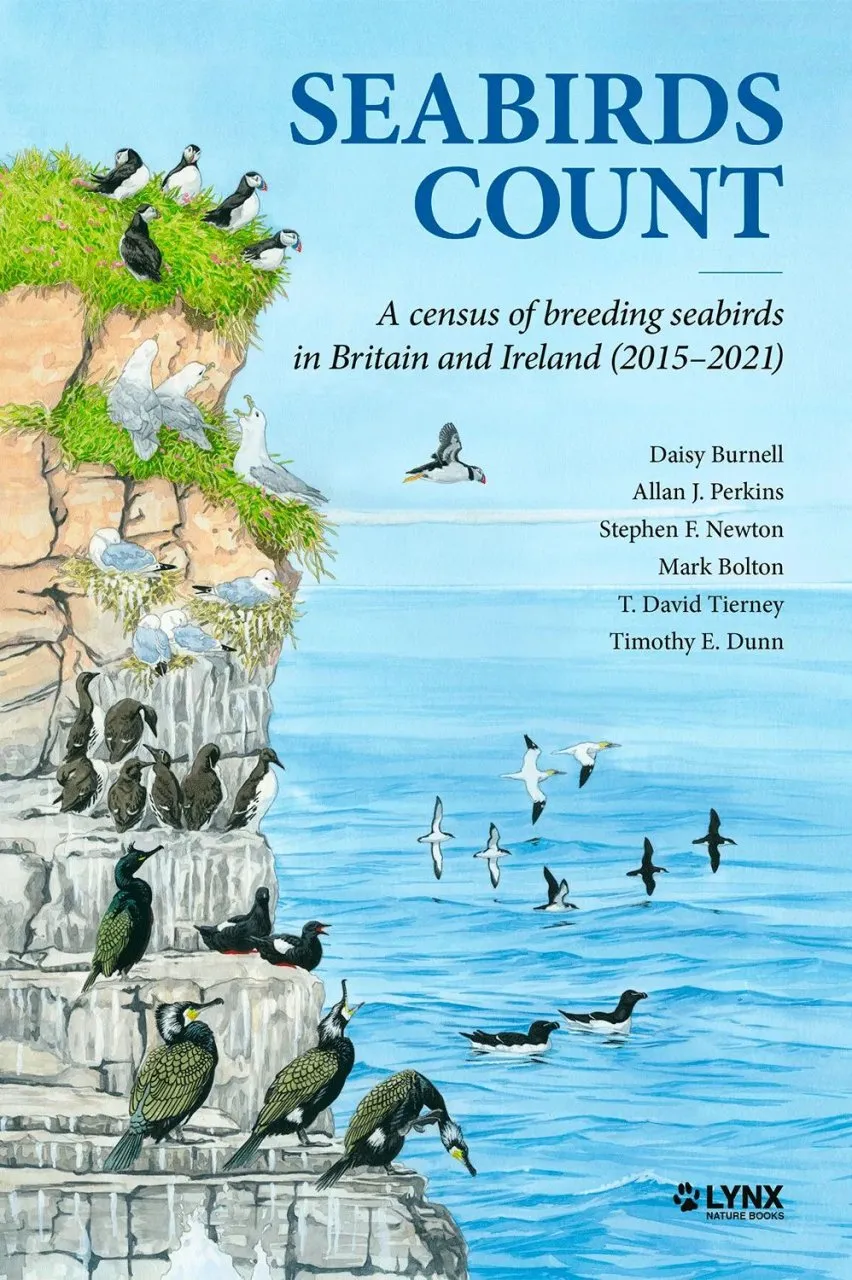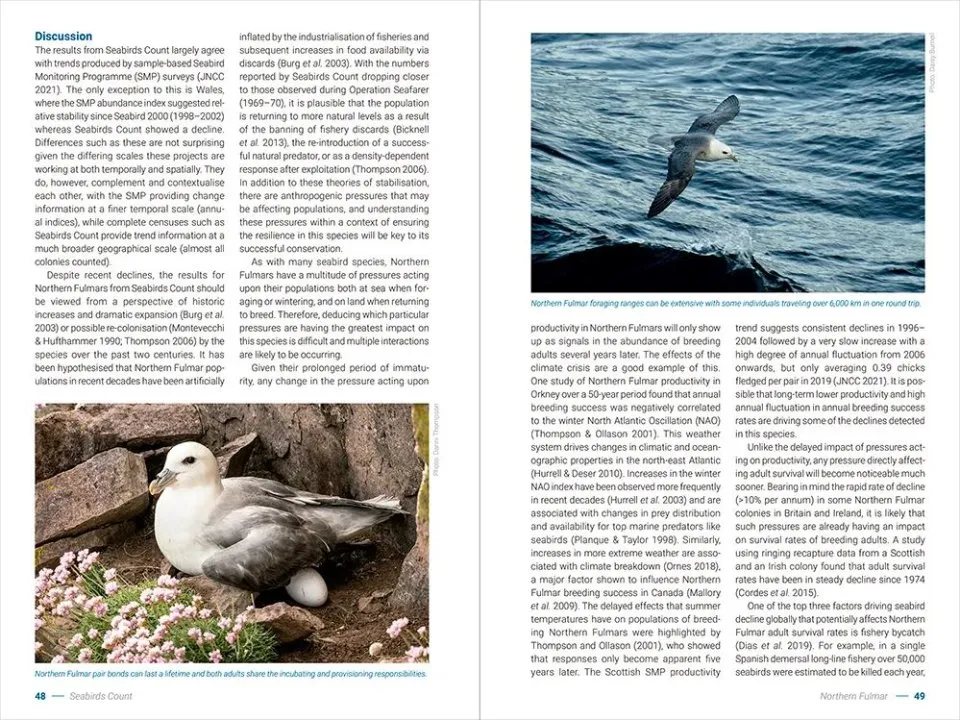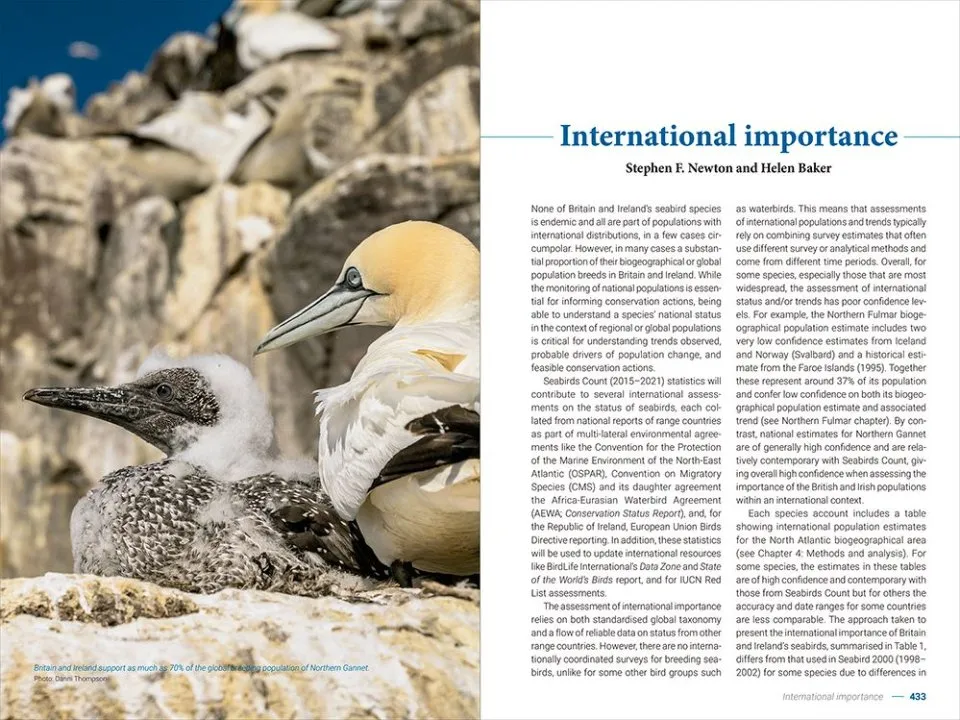There are many aspects of our birdlife that we should take great care of, but I would argue that our seabird populations are the most important by far, both nationally and internationally. Not only are these birds important, they are also relatively well-studied, although with 25 species to keep tabs on it is a major undertaking. Thus, in addition to any ad hoc studies, the government has a major monitoring programme and this book is the culmination of intensive surveys between 2015 and 2021.
Each of the 25 species gets a chapter, which provides both an introduction to the bird and its ecology and also the methods used to census it. The results of both this survey and others carried out before are tabulated and discussed. Two colour maps indicate the breeding trends, both by size of colony (mapped precisely) and the latest trends since 2000 shown by each 25km square. The total numbers nationally (and by local areas) are tabulated and also displayed on a pie chart. Comparisons against other countries in the North Atlantic are also given. These chapters are liberally illustrated by excellent photographs of the birds and their habitats, and these are accompanied by a set of colour paintings by Robert Vaughan.
View this book on the NHBS website
So, what did the survey find? Surprisingly, perhaps, the total number of breeding seabirds has remained almost unchanged since the last survey, in 1998–2002, but there were major changes in the make-up of species. Thanks to great conservation initiatives, there have been increases in some of our rarer species, such as Roseate Tern (up 15%) and the Mediterranean Gull, which increased 16-fold! Some commoner species, however, have shown steep declines. These were particularly marked in Scotland, where 15 species have declined, compared with reductions in only seven species each in England, Wales and Northern Ireland. Bizarrely, several species of gull, tern and auk have seriously declined in Scotland but have increased in Ireland, so clearly population changes are operating differently throughout the UK.
But what is causing the changes? The authors are clear that food availability is the main factor, with climate change and competition with fisheries being major influences. Seabirds are also suffering from the effects of predators, both directly on themselves and also through competition for food supplies. Severe weather events are increasing in frequency and can affect the overwinter survival of both adults and juveniles. There are many other factors at play – such as the closure of landfill sites that provided easy pickings for gulls – and these are discussed in a lengthy chapter. There is also an overall assessment of how important our seabird populations are internationally, offering a useful reminder that we provide nesting areas for most of the world’s Manx Shearwaters, Northern Gannets and Great Skuas.
It is abundantly clear that, in the face of everincreasing pressures on the marine environment, surveys such as this are essential if we are to understand and react to population changes. Tragically, as the survey period closed in 2021 the status of many seabirds started to be affected by the arrival of avian influenza. It remains to be seen just how severe the effects will be. Thankfully, some seabirds are already showing signs that they may be developing immunity to the virus, but not before many thousands have died from it.



